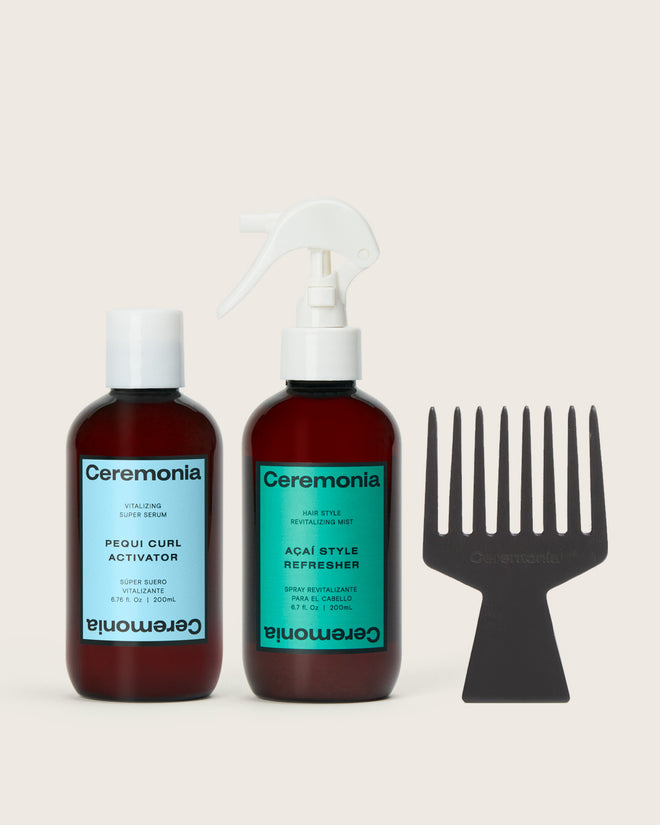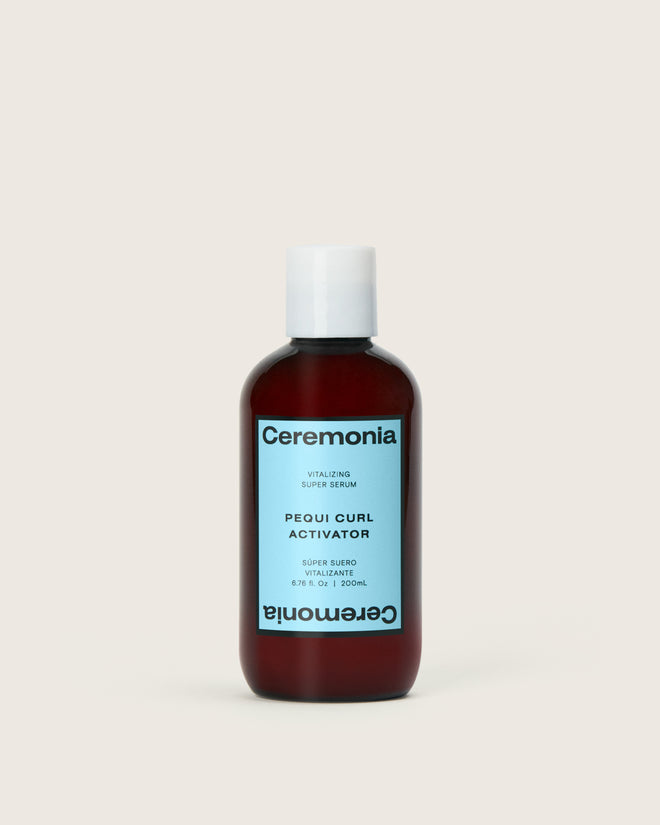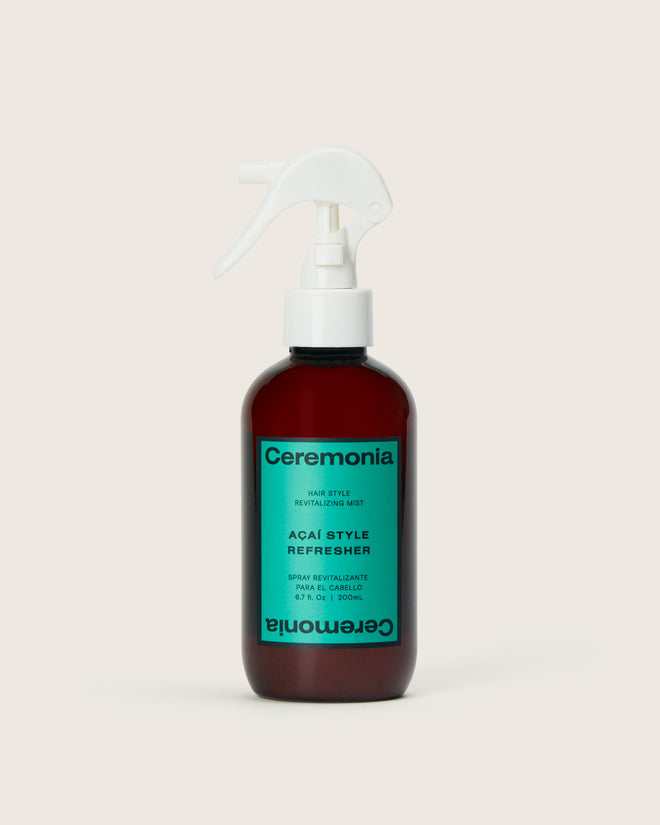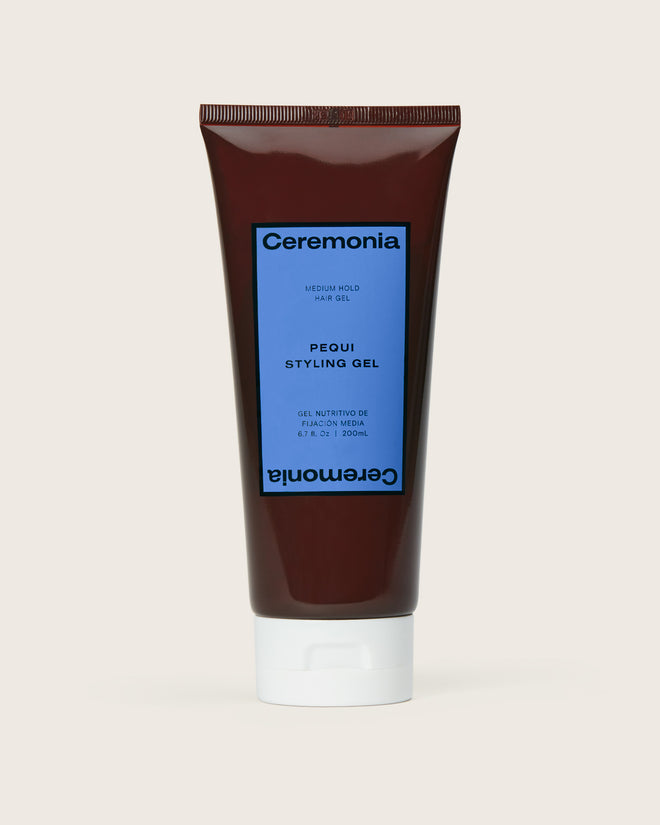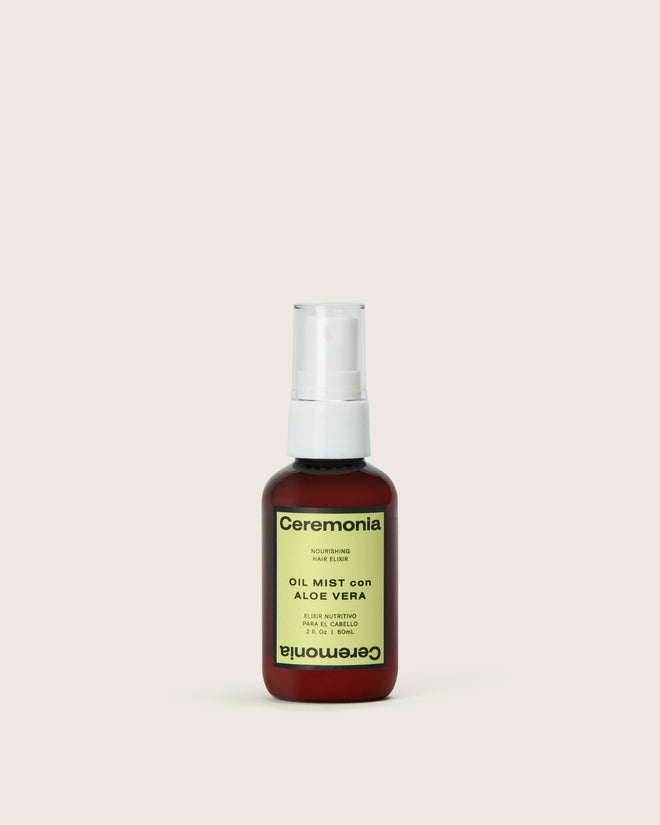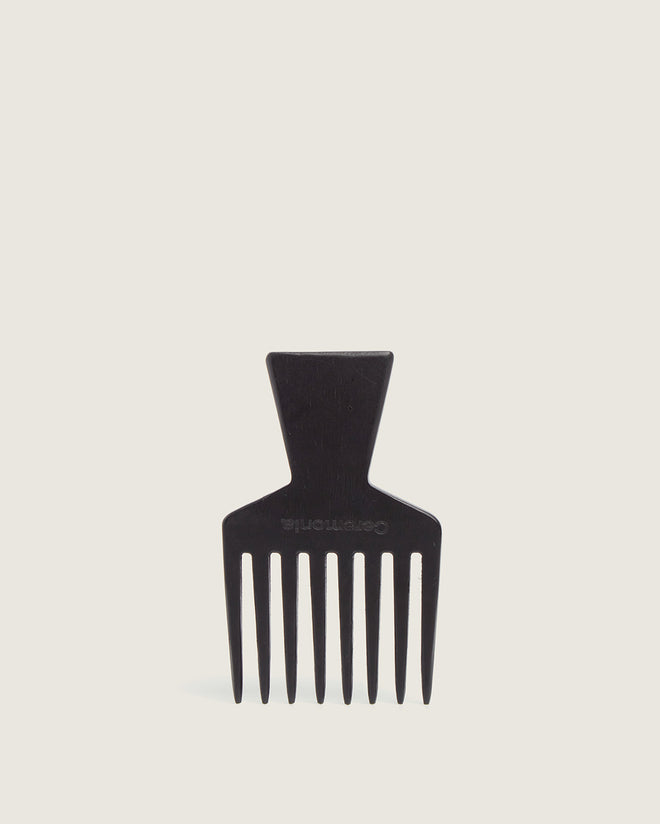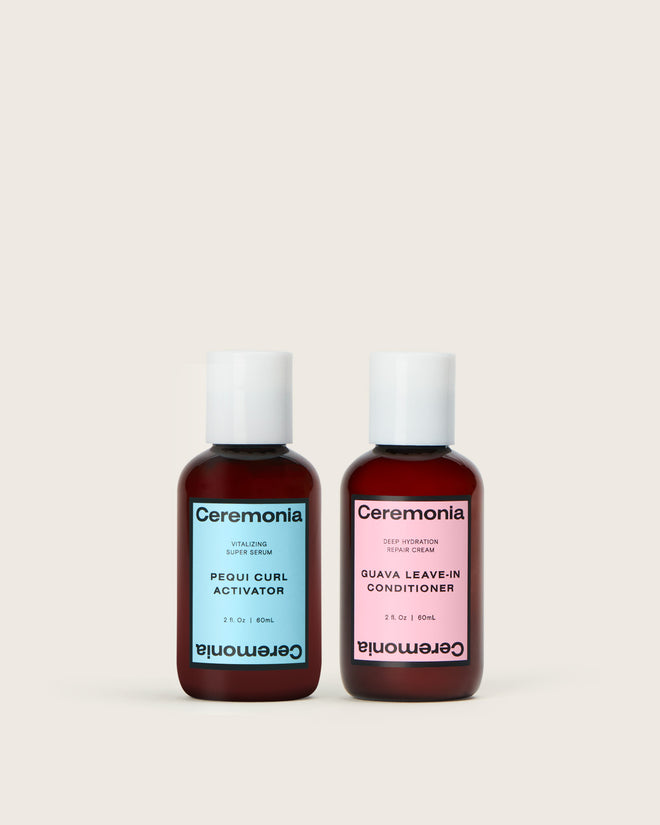Did you know over 1600 ingredients are banned in Europe, yet only 30 of those ingredients are banned in the U.S.? At Ceremonia we say no to all of them. These are ingredients that have been deemed unsafe just across the pond but are still being used in thousands of products here in the U.S. Up until recent years, it was the norm to use beauty and wellness products blindly, without a second thought as to what harmful ingredients may be in them. We have been groomed to believe that the big-box beauty, OTC meds and silicone-filled hair care is the best we can do. But that was then—luckily, somewhere along the way, we began to wisen up and actually ask questions and demand answers.
In our continued efforts to create cleaner and safer products, we invited some of the female-founders shaking things up in the beauty industry to speak on their clean brands at a virtual event we hosted for some of our earliest supporters. We discussed things like clean ingredients vs. synthetics, common misconceptions and where we are now in all of this. We heard insightful brand philosophies, insider knowledge and pointers for going clean, and we re-capped it all here for you.

What exactly is clean beauty?
Clean beauty consists of beauty products intentionally created without any ingredients having been proven or suspected to harm human health. That’s not to say the drugstore mascara you’ve been using since you were 16 is hurting you, but it may not necessarily be “helping” you. Clean, most often, also means the products are eco-friendly, sustainable, and cruelty-free.
Here are some of the top harmful ingredients eliminated by just about any clean beauty brand or advocate:
- Sodium Lauryl Sulfate (SLS), a soap-like compound that is used to create that bubbly lather you are probably used to in your beauty products, like shampoo or face wash, for instance. Sulfates differ amongst each other, so you will only be able to recognize them through their actual description. Be on the lookout for Sodium Lauryl Sulfate Sodium, Laureth Sulfate Sodium, Lauryl Sulfoacetate Sodium, Lauroyl Isethionate, Sodium Lauroyl Taurate.
- Silicones, typically used in hair care to create the essence of soft, shiny hair, which actually just masks the hair and doesn’t truly provide softer, shinier strands. Look out for any words that end with this: -cones, -conols, -silanes, and -siloxanes.
- Parabens, these are most-commonly used as a preservative to increase the shelf-life of formulas. Look out for any words that end with -paraben.
What’s interesting about all of these ingredients is that none of them are meant to truly benefit your skin/hair/body in any way but instead are used merely for illusion or to create a synthetic effect. We call these types of ingredients “fillers,” as their use is not associated with performance. A clean brand will typically replace these fillers with purposeful ingredients meant to offer real benefits for you, the consumer.
For Siff, Founder of Arrae, a brand dedicated to completely natural solutions for internal wellness, fillers were out of the question:
“We don’t use any fillers in our products… so our shelf life may be shorter than other brands. [But] we wanted to make it very bio available. We don’t use any dyes or anything, because we want to keep the ingredients in their most natural form.”

Clean beauty products shouldn’t temporarily “fix” an issue like most conventional beauty products. Instead, they should aim to provide real results to whatever concern the product addresses. This is especially true at Ceremonia, and, in fact, was a big source of inspiration in building the brand. Our founder, Babba Rivera, speaks on this:
“The hair category is surprisingly behind. There was no off-shelf optionality that fit our standards and vision. We had to create everything from scratch, and it’s often a big battle with manufacturers, because they are so used to doing things as they have always done. [They’ll say] ‘Oh, you want your hair soft? Let’s just add silicones.’ and it’s like, no, but what if I want the hair to become soft from within? I don’t want the hair to just feel soft, I want it to be soft.”
Founder Laney Crowell of SAIE Beauty, a beauty brand breaking the makeup mold with their 100% clean and honest formulas, explains that natural ingredients like shea butter and aloe are used in place of the many plastics commonly found in conventional beauty:
“The trickiest ingredient to formulate without is some version of plastic. A lot of traditional makeup has plastic in it, whether that’s a silicone or something petroleum-based, which makes it really hard to develop without. Our head of product development calls it the Olympics of product development, because it takes her the same amount of time to make one product at Saie as it used to take her to make 30-40 products when we worked together in big beauty. It’s just way more complicated, but the flip side of that complication is that the products are really good for you.”
What does it mean to be a clean brand?
We asked our founders what their definition of clean is to them, in an industry where “clean” is an all-too-often tossed around word used by brands claiming to be more clean than they actually are.
A common thread for most brands that are truly “clean” is transparency. Inviting open and honest conversation is key to building a trustworthy rapport between consumers and brands—what goes into the products, where they source ingredients, how they test products, their efforts in environmental protection and everything in between.
What is the difference between clean and natural?
It’s common to hear these terms used interchangeably and often to describe the same products, which isn’t necessarily wrong, but there is a difference between them.
A clean product means that it is created without any toxins or ingredients that have been deemed harmful or suspected to harm human health. A natural (or organic) product is created with only “pure” ingredients found in nature.
Clean is not the same as all natural, and all natural is not the same as safe. Many natural ingredients can cause irritations as humans can be allergic to natural ingredients in beauty the same way we are in food. That’s why purchasing from brands who are RIPT-test certified is so important, meaning they have been tested for common things like skin irritation, allergies, etc. Ceremonia prides itself in conducting third-party RIPT testing on all its products.
All of the above would fall under the clean category at the end of the day, but it’s good to be aware of some of the nuances when it comes to this topic.
Common misconceptions in clean beauty:
- Clean hair care isn’t as important as other categories. The truth is that the scalp is one of the most absorbent parts of the body, making clean hair care that much more important for your health, not to mention the major role non-clean hair products play in polluting our waterways. Knowing what we put on our scalp should be one of our highest priorities in beauty, given how absorbent that part of the body is.
- The price of a product directly correlates to its quality—That’s not always true. In many cases, the premium price tag for big-box beauty products is paying for things like large-scale ad campaigns, endorsements from big celebrities and other inflated marketing costs associated with the brand, not into the products alone. Not to mention all the middlemen involved in traditional beauty, from distributors to retailers. Buying digital native brands usually means cutting out the middleman and giving consumers higher quality at a lower price.
- Makeup is inherently bad for you and your skin. This doesn’t have to be true. With the right ingredients, makeup can look good, feel good and help your skin all the while.
- Clean internal wellness takes time and commitment—Actually, natural, clean remedies can see significant results immediately! You can replace the things you would normally buy from the pharmacy with natural remedies and expect results the same way. It doesn’t take a daily commitment and dozens of supplements to do the trick.
There’s no better time than a new year to pick up good habits that can have a truly lasting, positive effect on your overall health. We hope this guide can help you navigate your clean beauty journey into 2021 and beyond. For more information on Ceremonia ingredients or our ‘free-of’ list, you can check out our dedicated ingredients page here!
